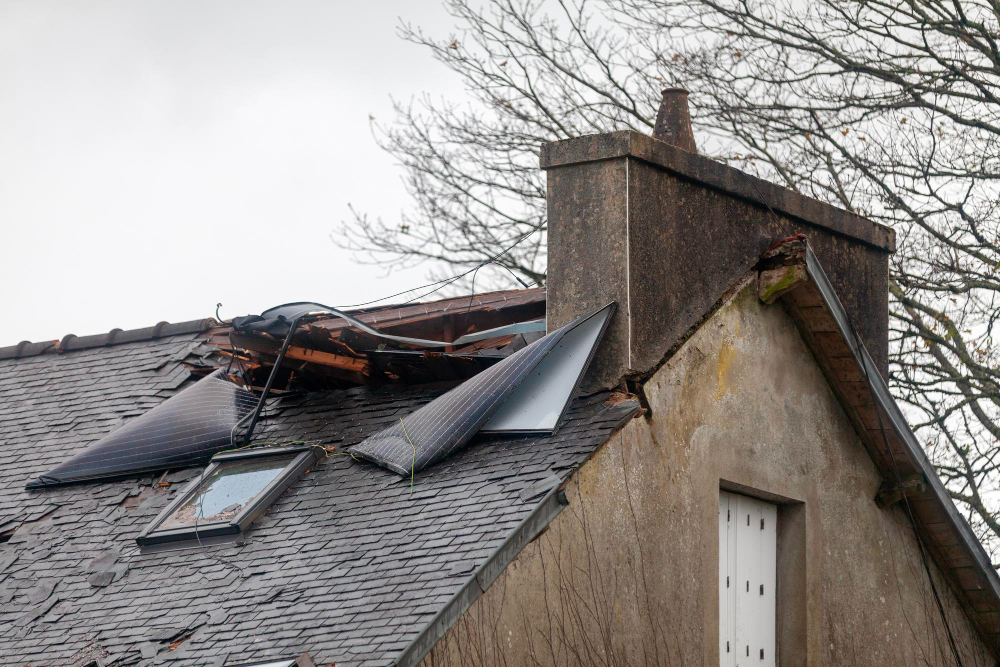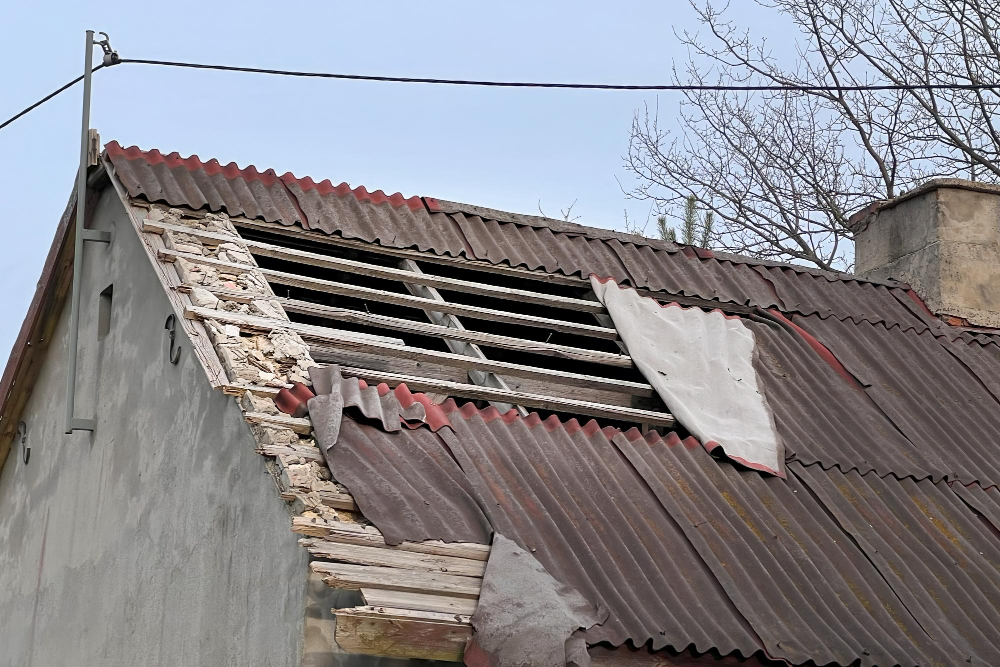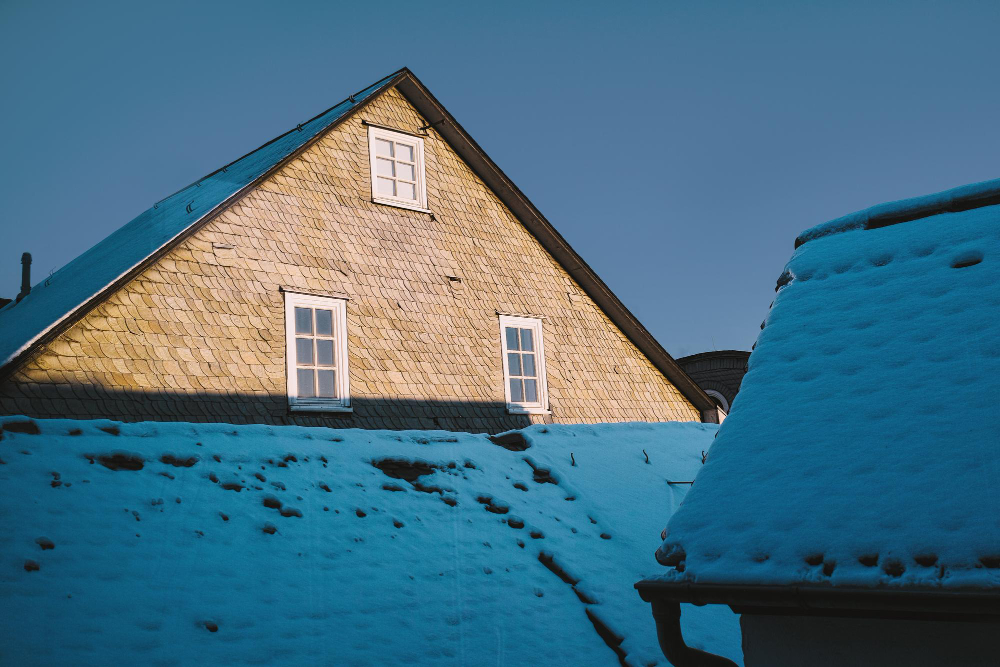What Is the Impact of Wind and Hail on Roofs? Wind and hail are natural forces that can considerably impact the structural integrity and lifespan of roofing systems. Homeowners and property managers often overlook the extent of damage these elements can cause until it’s too late. Understanding the effects of wind and hail on roofing not only aids in maintaining the structure’s safety but also helps in informing decisions regarding repairs and upgrades. This guide aims to provide insights into the mechanisms of wind and hail damage, preventative measures, and the importance of regular inspections, ensuring that your roof remains a reliable barrier against the external elements.
Types of Roof Damage Caused by Wind & Storms
Storms and strong winds can affect roofs in various ways, depending on their age, material, and design. Common problems include:
Missing or Dislodged Tiles
High winds can loosen or remove tiles, leaving parts of the roof vulnerable to water damage.
Cracks and Leaks
Strong winds or debris can cause cracks in tiles or the roof, which may lead to leaks.
Damaged Flashing
The flashing around chimneys, vents, and edges can loosen or get damaged in high winds, allowing water seepage.
Gutter and Drainage Blockages
Strong winds can blow leaves and debris into gutters, causing blockages that stop proper drainage and lead to water pooling on the roof.
Identifying the Signs of Roof Damage After a Storm
After a storm, check your roof for damage to fix problems quickly. Avoid climbing onto the roof; instead, look for these signs from the ground or your attic:
Missing or Misaligned Tiles: Look for gaps or tiles that are out of place, which may indicate wind damage.
Visible Debris on the Roof: Broken branches or debris could have damaged the roof tiles or its structure.
Water Stains Inside: Dark stains on your property’s ceilings or walls point out that water is leaking in, showing a roof leak.
Damaged Flashing: Check for gaps or peeling around chimneys and vents, which may indicate that the flashing has moved due to wind.
Signs of Wind Damage
Missing Shingles
High winds can pull shingles off roofs, leaving homes exposed. Homeowners may not notice this damage right away. To check for roof problems, look for missing or loose shingles. If you find them, your roof may need repairs or replacement to avoid bigger issues.
Missing Granules from Your Shingles
After a hailstorm, check your gutters for granules, which can pile up there. Coming off of some granules over time is normal, but if one side of your roof looks bare, it might indicate serious problems with its condition.
Peeling or Curling Shingles
Strong winds can cause shingles to peel or curl. Look for curled shingles and repair them quickly for preventing water damage inside your residence.
Cracks in the Flat, Rubber Roof
For flat roofs, inspect for cracks or tears in the material. Wind can easily lift the roofing and cause damage. Catching small tears early is important, as bubbles in the roofing mean there might be a bigger issue.
Damaged Soffit or Fascia
Winds can crack, loosen, or even break parts of the soffit or fascia.

Signs of Hail Damage
Cracks & Fractures
Hail can damage shingles, affecting your roof’s strength.
Patterns of Damage
Hail damage is usually random, but look for repeated hitting patterns, especially on softer areas. Damage might be severe on one side, depending on the storm’s direction.
Shingle Granule Loss
Hail can knock granules off shingles, which are essential for a strong roof. If you notice these granules in your gutters or around your house, immediate repairs are likely needed.
Indoor Water Damage
Signs of water damage inside your home, like stains, discoloration, puddles, mold, or wet insulation, may mean hail has impacted your roof’s waterproofing.
Chimney Cover Damage
Metal chimney covers can get dents. If you don’t spot any, rub chalk on the area to help reveal them.
Siding Damage
Check your siding for dents, cracks, missing paint, holes, or stains. Damage to the siding often indicates roof issues, too.
Missing Shingles
Strong winds from a hailstorm can blow shingles off your roof, which may end up in your or your neighbor’s yard.
Vent or Gutter Guard Damage
Hail can dent and scratch gutter guards, and other roof vents might show similar damage.
Satellite Dish Damage
Look for dents, paint chips, or loose parts on satellite dishes. If your satellite dish is damaged, your roof probably is too.
Steps to Take After Roof Damage
Contact Immediately: If you see a leak, determine where it’s coming from to help your contractor find the issue. Let your insurance provider know about the damage and follow their claims process.
Document the Damage: Take clear photos of the damaged areas and any leaks inside your home for your insurance claim.
Get a Professional Inspection: Have an inspector assess the damage level for your insurance claim.
Seek Help Quickly: Fixing the damage as soon as possible is important.
Contact Local Roofing Companies: Get quotes from several licensed roofing contractors to compare prices and ensure you get quality repairs.

Preventive Measure
After repairs, you can strengthen your roof for future storms by:
Inspecting Regularly: Check your roof at least once a year to catch problems early and prevent major damage.
Cleaning Gutters: Remove debris from gutters to avoid water buildup and guarantee proper drainage during heavy rain.
Trimming Trees: Cut back branches that hang over your roof to reduce the risk of damage from falling branches in strong winds.
The Importance of Prompt Roof Repairs
Delaying roof repairs after a storm can cause bigger problems, like structural damage, mold, and higher costs. Acting quickly helps maintain the roof’s strength and protects the property from future storm damage.
Quick action helps prevent small problems from becoming worse. For instance, a missing tile may seem minor, but if ignored, it can allow water in, leading to major damage. Timely repairs protect your investment and extend your roof’s life, protecting your property.
Why Opt for Professional Roof Inspection and Repairs?
DIY repairs may seem appealing, but fixing storm damage requires professional help for safety and quality. Skilled roofers have the expertise and tools to effectively handle storm damage, including securing loose tiles, repairing damaged flashing, and clearing blocked gutters. The key benefits of professional roof inspection and repair are:
Early Detection
Identifying small problems, such as cracked shingles, damaged flashing, or clogged gutters, is crucial in roof maintenance. Early detection allows homeowners to address these minor issues before they escalate into leaks or extensive damage, ultimately prolonging the roof’s life.
Cost Savings
Addressing roofing issues early can lead to huge savings on repair costs. Timely repairs are much less expensive than waiting for major problems to develop, which can require costly materials and professional labor.
Safety Concerns
Identifying potential hazards, such as loose or damaged roofing materials, is essential to ensure safety, particularly during storms. Unrepaired roofs can pose serious risks, including falling debris that may injure residents or damage property.
Improved Energy Efficiency
A well-maintained roof enhances energy efficiency by improving insulation. This can prevent unnecessary heat loss in winter and heat gain in summer, leading to lower energy bills and a more comfortable home environment.

Insurance Coverage for Roof Damage
Your insurance policy protects you from unexpected property damage costs. It covers damages to your roof and structures like garages, but not every reason for roof replacement is included. For example, insurance companies may deny coverage if a roof deteriorates due to years of neglect. Earthquake, flood, or mudslide damages usually need special coverage.
Coverage for Wind & Hail
Wind and hail frequently cause roof problems; most standard policies cover such damage. However, policies may cost more in areas with many wind and hail storms. The extent of the damage matters, too; minor cosmetic issues, like small shingle nicks after a hailstorm, may not be covered as they’re considered “cosmetic.”
Conclusion
Understanding the impact of wind and hail on roofing is crucial for homeowners, builders, and maintenance professionals alike. These natural forces can significantly affect the integrity and longevity of roofing systems, leading to potential damage and costly repairs. One can minimise the adverse effects of wind and hail by being aware of the risks and implementing appropriate protective measures, such as selecting durable materials and conducting regular inspections. This guide is a valuable resource to help stakeholders make informed decisions and ensure the resilience of their roofs against harsh weather conditions.

